
- Permbajtja
- prev
- next
- prev
- next
HIGHLIGHT: MENOS É MAIS
Menos é Mais Arquitectos is an office created in Porto by Francisco Vieira de Campos (Porto) and Cristina Guedes (Macau) in 1994. The ability to do more and better with less is their motto, seek to balance the "economy" of means with the "richness" in the materiality and emotional involvement of the users. His works are a pragmatic response to specific contexts. These principles are visible from the first works to the Recovery Project of Quinta do Vallado; and in the Archipelago Centro de Artes Contemporânea, on the island of São Miguel in Azores (a co-authoring Menos é Mais with JMR).
"Through untiring experimentation, they became a kind of military engineers, evoking the best Portuguese tradition, always beginning with the same poetic pragmatism." Nuno Grande
Cristina Guedes teaches in USI - Accademia di Architettura di Mendrisio and FAAULP.
Francisco Vieira de Campos teaches at FAUP and Navarra University, in Pamplona.
They were invited to national and international conferences, juries, exhibitions and critics in various faculties as ETH Zurich, TU Wien at the Polytechnic of Lausanne, among others. They were awarded by the Royal Institute of British Architects becoming International RIBA Fellows.
Selected Projects
Miragaia Residential Complex

The XIII century building, with a facade of great architectural value, is composed of 4 floors and the top floor is a ruin. The interior is partially destroyed leaving only the facade. The proposal contemplates the consolidation of the main ruin facade. The top floor is rebuilt with contemporary lightweight materials because of the difficulty of replacing the existing stonework with certain wear and tear of the time.
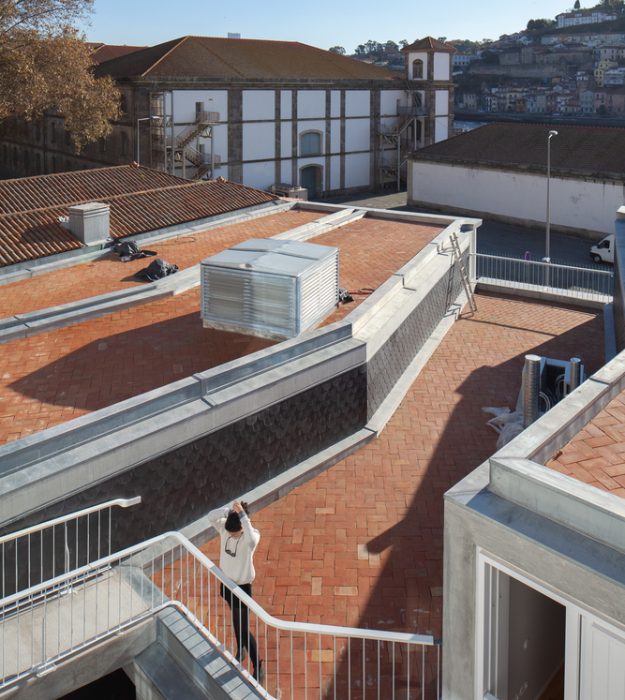
Photos © José Campos
Arquipélago Contemporary Arts Centre
Colaboration with João Mendes Ribeiro
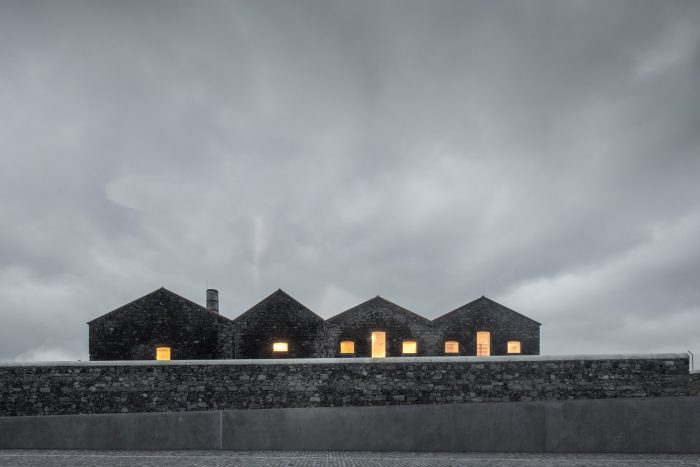
The Arquipélago Contemporary Arts Centre seeks to unite the different scales and times of its parts. It is a transdisciplinary project whose mission is to disseminate, create, and produce emerging culture: a space of exchange and interfaces for people, knowledge, and events. The Arquipélago Contemporary Arts Centre acquires its identity by the quiet variation between the preexistence and the two new buildings. The containment strategy of facilities implementation enhances the spatial efficiency and hierarchical functionality of the different areas of the existing factory complex. The new buildings absorb the required functionalities, with special conditions, not compatible with the spatiality of preexisting buildings.
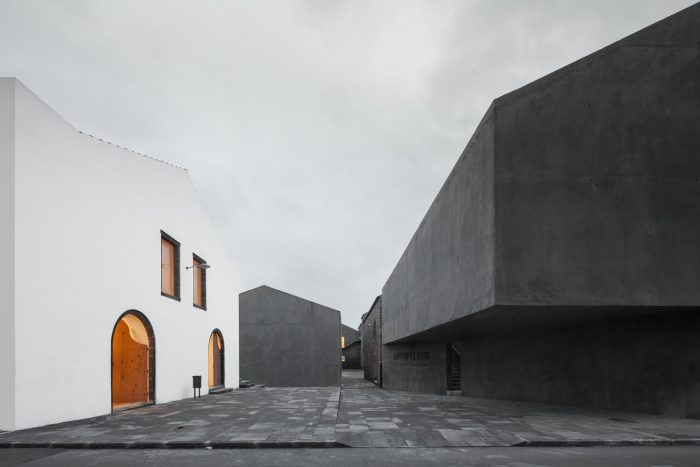
Photos © José Campos
Ar de Rio Bar Esplanade
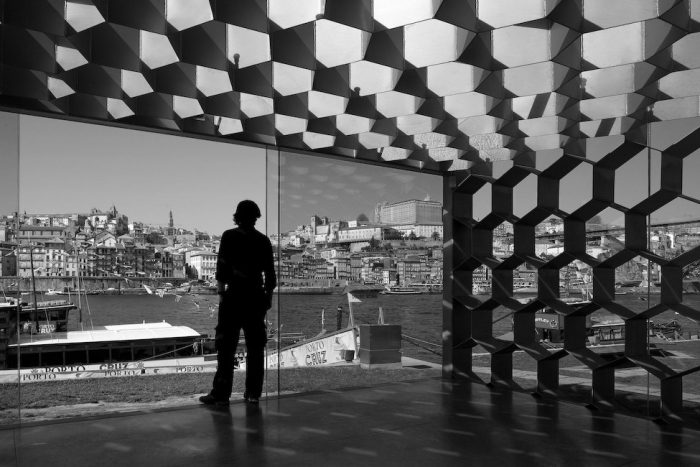
The design was guided by some key concepts: great simplicity and maximum efficiency through great economy of means, all leading to standard procedures that could end in standard solutions. That is why they are almost like a kit of modules that can be freely adapted and combined. And due to the ephemeral use and the implicit mobility the efficient design of transports was in our mind during the all process. Bares de Gaia were also a test on the appropriation of a building by its inhabitants.
Vila Sanches
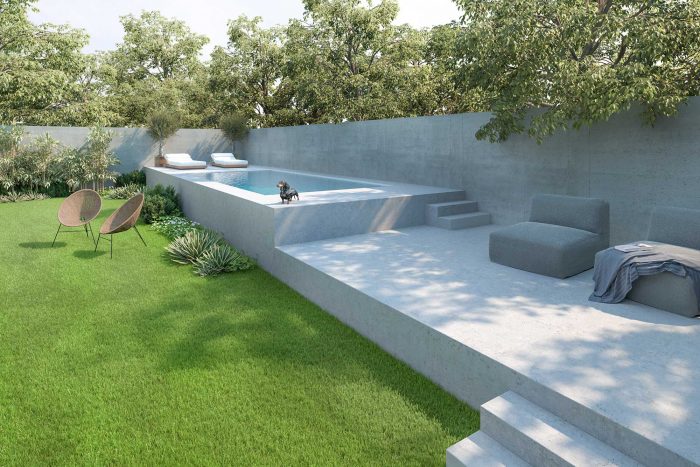
The “Vila Sanches” project reformulates a deep and irregular plot by constructing 2 residential buildings, facing Rua Campo de Ourique and Praça Afonso do Paço. A large central space is set free for a garden to take place, making up for the environmental and landscape requalification of the surroundings.
The intervention seeks to value and nourish the identity of the place, enhancing calm and neighborly relations, reconciling the interiority of the dwelling with the views of the Monsanto park and the urban landscape of Lisbon, in an integrative architectural solution.
By reinterpreting the proportions and rules of the surrounding buildings, the project focuses on a contemporary design and providing new urban experiences.
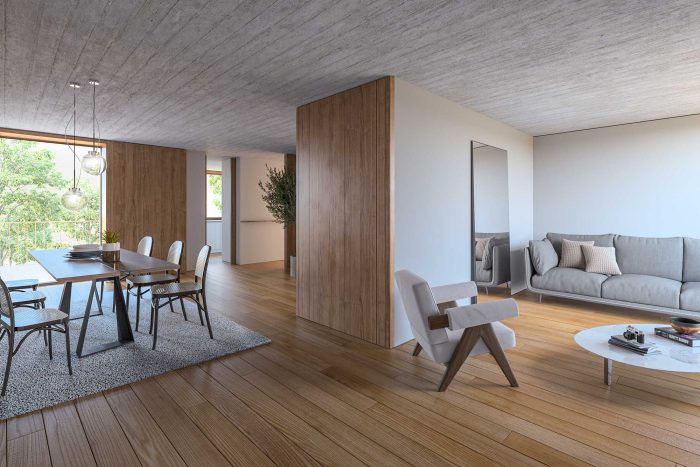
Hotel Rural Casa de Rio

The request of small equipment for agrotourism built in a wood modular system. Fifteen modules with the dimensions of 6,60 x 3,30m, generate the container to the necessary spaces of functionality and interior comfort. The exterior spaces, in the shape of balconies, long terraces, guarantee the accesses and circulations, as well as the protection against solar rays and weatherproof.
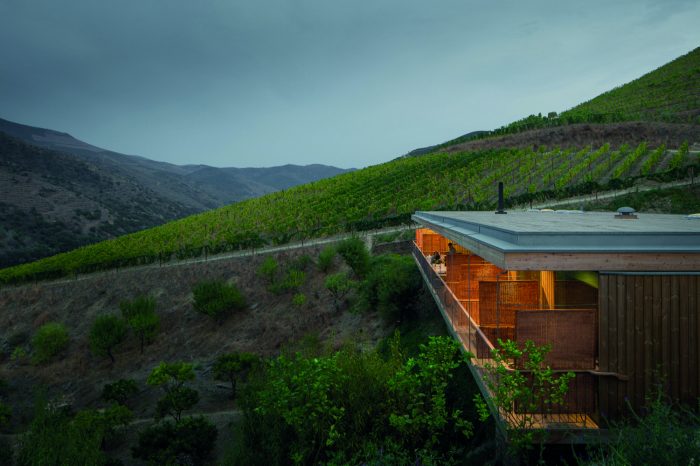
Underneath, sustaining all the wood construction, there's a metallic frame that rests in two pillars, that overcome a span of 13m in the center and two symmetrical cantilevers of 6,60m on each side. These pillars, with habitable space inside, shelter all the technical zones and necessary services.
Photos © José Campos, Francisco Viera de Campos
Gaia Ropeway Cablecar

The challenge of the project is to intervene in the impressive scenario of the new Serra do Pilar – Cais de Gaia axis and, simultaneously, harmonising it with the technological complexity of a cable car. Basically it was also a question of creating a new – axial, functional and visual – urban axis characterised by the introduction of a very strong movement in the landscape.
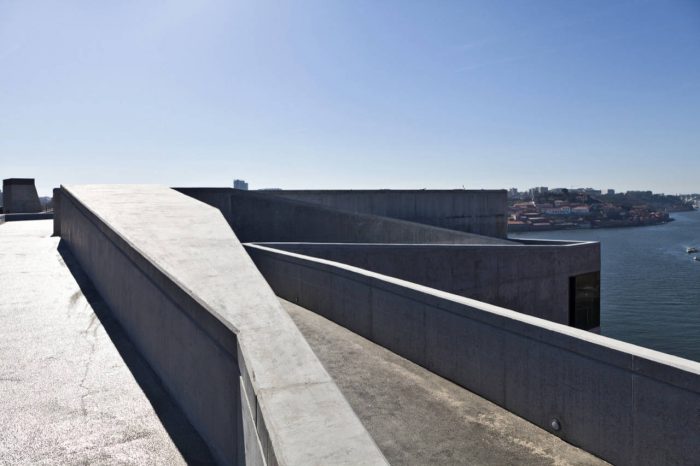
Photos © Alberto Plácido
Casa das Caldeiras
Colaboration with João Mendes Ribeiro
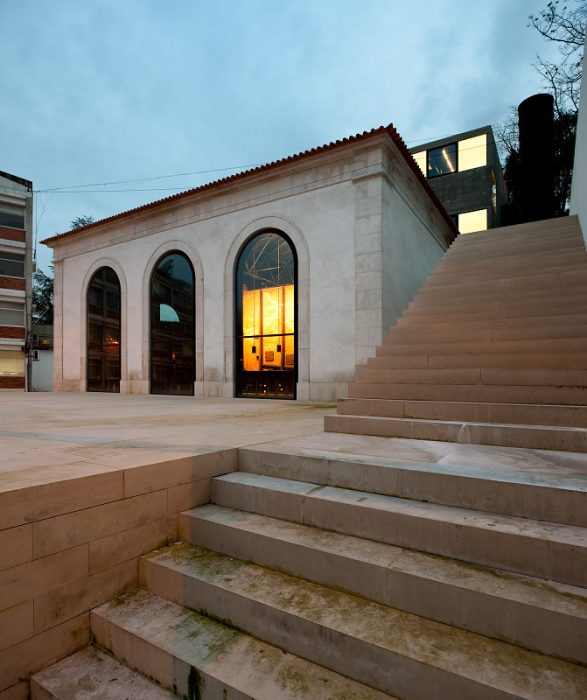
This project involves remodelling the old Thermal Centre of University of Coimbra Hospital and constructing a new building. It was developed at the end of 1990s to house the Photographic Study Centre of the University of Coimbra. The work was completed about ten years later and the building handed over to the Faculty of Arts to serve as the premises for post-graduate courses in Art Studies. Despite the fact that the use and programme of the building had been altered the core characteristics of the project were maintained in full. The project led to requalification of the existing building, on the one hand enhancing it within its historical context of industrial archaeology and, on the other, clarifying its integration in the town structure.

Photos © Fernando Guerra
Source: MENOS É MAIS